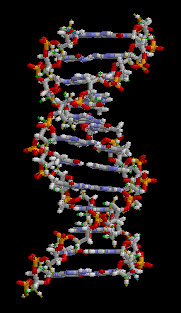Cross posted from The Stars Hollow Gazette
This is your morning Open Thread. Pour your favorite beverage and review the past and comment on the future.
Find the past “On This Day in History” here.
February 27 is the 58th day of the year in the Gregorian calendar. There are 307 days remaining until the end of the year (308 in leap years).
 On this day in 1827, New Orleanians take to the streets for Mardi Gras with groups of masked and costumed students dance through the streets of New Orleans, Louisiana, marking the beginning of the city’s famous Mardi Gras celebrations.
On this day in 1827, New Orleanians take to the streets for Mardi Gras with groups of masked and costumed students dance through the streets of New Orleans, Louisiana, marking the beginning of the city’s famous Mardi Gras celebrations.
The celebration of Carnival–or the weeks between Twelfth Night on January 6 and Ash Wednesday, the beginning of the Christian period of Lent–spread from Rome across Europe and later to the Americas. Nowhere in the United States is Carnival celebrated as grandly as in New Orleans, famous for its over-the-top parades and parties for Mardi Gras (or Fat Tuesday), the last day of the Carnival season.
 History
History
The celebration of Mardi Gras was brought to Louisiana by early French settlers. The first record of the holiday being celebrated in Louisiana was at the mouth of the Mississippi River in what is now lower Plaquemines Parish, Louisiana, on March 3, 1699. Iberville, Bienville, and their men celebrated it as part of an observance of Catholic practice.
The starting date of festivities in New Orleans is unknown. An account from 1743 notes that the custom of Carnival balls was already established. Processions and wearing of masks in the streets on Mardi Gras took place. They were sometimes prohibited by law, and were quickly renewed whenever such restrictions were lifted or enforcement waned. In 1833 Bernard Xavier de Marigny de Mandeville, a rich plantation owner of French descent, raised money to fund an official Mardi Gras celebration.
James R. Creecy in his book Scenes in the South, and Other Miscellaneous Pieces describes New Orleans Mardi Gras in 1835:
Shrove Tuesday is a day to be remembered by strangers in New Orleans, for that is the day for fun, frolic, and comic masquerading. All of the mischief of the city is alive and wide awake in active operation. Men and boys, women and girls, bond and free, white and black, yellow and brown, exert themselves to invent and appear in grotesque, quizzical, diabolic, horrible, strange masks, and disguises. Human bodies are seen with heads of beasts and birds, beasts and birds with human heads; demi-beasts, demi-fishes, snakes’ heads and bodies with arms of apes; man-bats from the moon; mermaids; satyrs, beggars, monks, and robbers parade and march on foot, on horseback, in wagons, carts, coaches, cars, etc., in rich confusion, up and down the streets, wildly shouting, singing, laughing, drumming, fiddling, fifeing, and all throwing flour broadcast as they wend their reckless way.
On Mardi Gras of 1857, the Mystick Krewe of Comus held its first parade. Comus is the oldest continuously active Mardi Gras organization. It started a number of continuing traditions. It is considered the first Carnival krewe in the modern sense. According to one historian, “Comus was aggressively English in its celebration of what New Orleans had always considered a French festival. It is hard to think of a clearer assertion than this parade that the lead in the holiday had passed from French-speakers to Anglo-Americans. . . .To a certain extent, Americans ‘Americanized’ New Orleans and its Creoles. To a certain extent, New Orleans ‘creolized’ the Americans. Thus the wonder of Anglo-Americans boasting of how their business prowess helped them construct a more elaborate version of the old Creole Carnival. The lead in organized Carnival passed from Creole to American just as political and economic power did over the course of the nineteenth century. The spectacle of Creole-American Carnival, with Americans using Carnival forms to compete with Creoles in the ballrooms and on the streets, represents the creation of a New Orleans culture neither entirely Creole nor entirely American.”
In 1875 Louisiana declared Mardi Gras a legal state holiday. War, economic, political, and weather conditions sometimes led to cancellation of some or all major parades, especially during the American Civil War, World War I and World War II, but the city has always celebrated Carnival.
On this day in 1887, Anne Sullivan begins teaching six-year-old Helen Keller, who lost her sight and hearing after a severe illness at the age of 19 months. Under Sullivan’s tutelage, including her pioneering “touch teaching” techniques, the previously uncontrollable Keller flourished, eventually graduating from college and becoming an international lecturer and activist. Sullivan, later dubbed “the miracle worker,” remained Keller’s interpreter and constant companion until the older woman’s death in 1936.


 On this day in 1836, the
On this day in 1836, the  The Republic of Texas was created from part of the Mexican state
The Republic of Texas was created from part of the Mexican state  On this day in 1961, President John F. Kennedy issues Executive Order #10924,
On this day in 1961, President John F. Kennedy issues Executive Order #10924,  The
The  On this day in 1940,
On this day in 1940,  DNA was first isolated by the Swiss physician
DNA was first isolated by the Swiss physician  On this day in 1827,
On this day in 1827, 